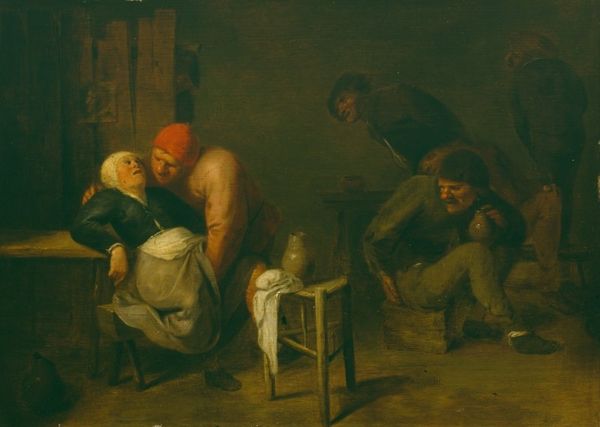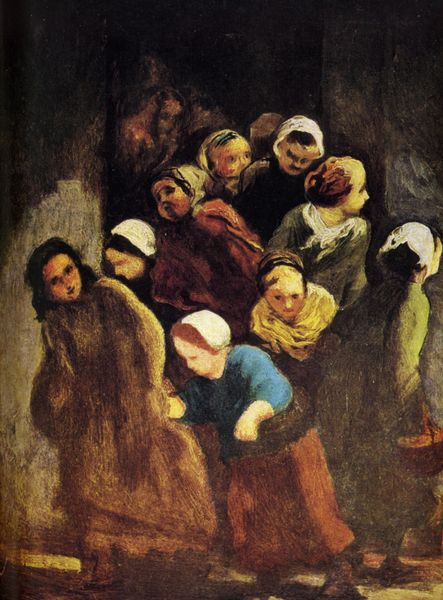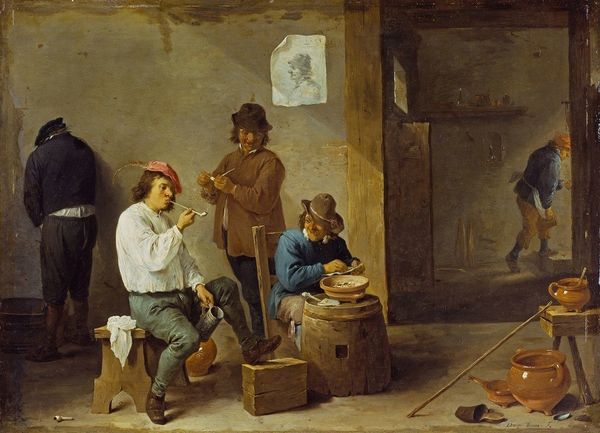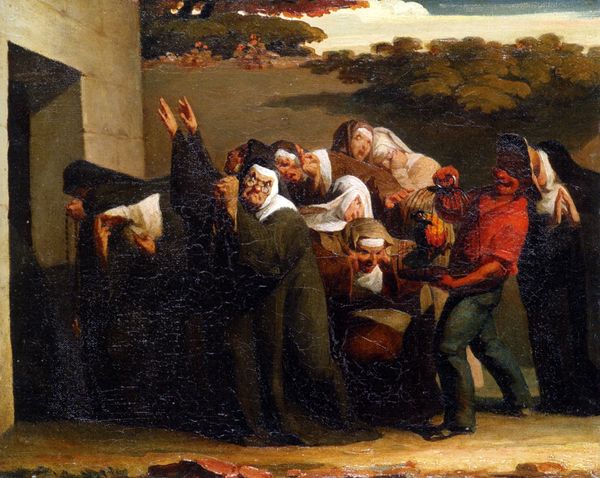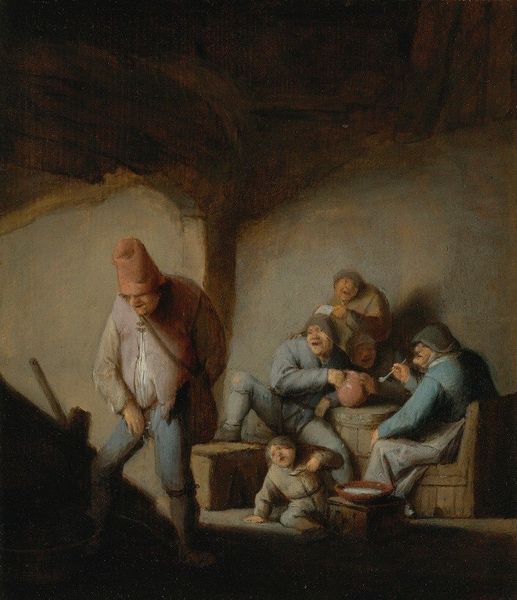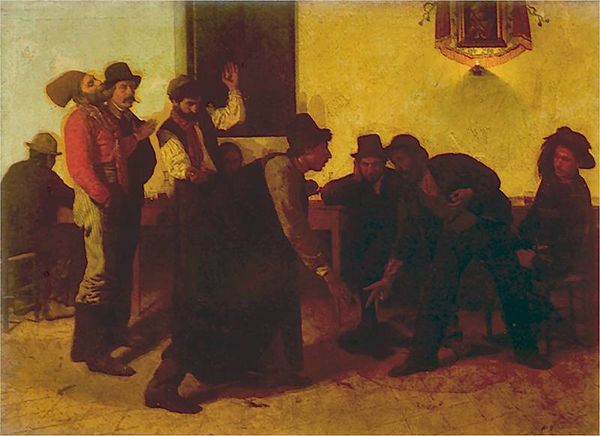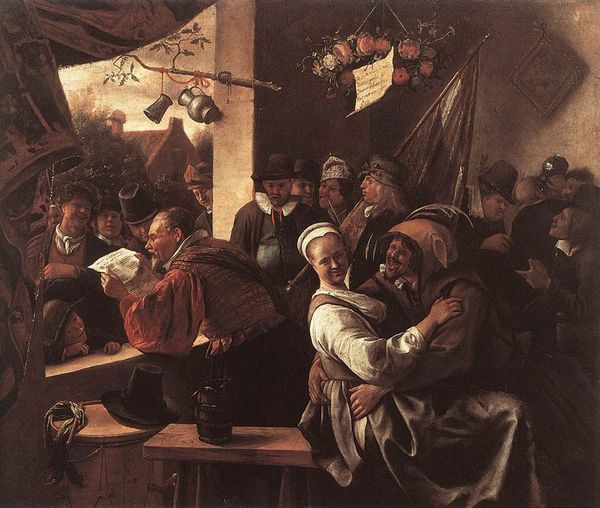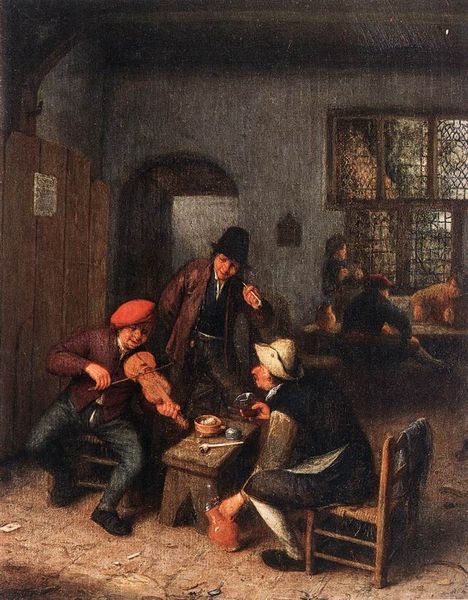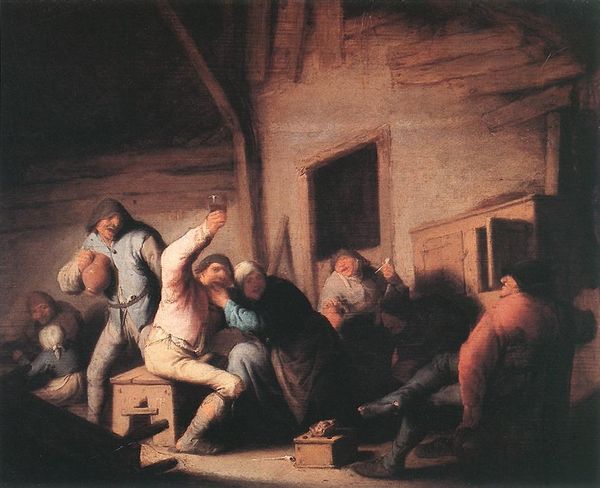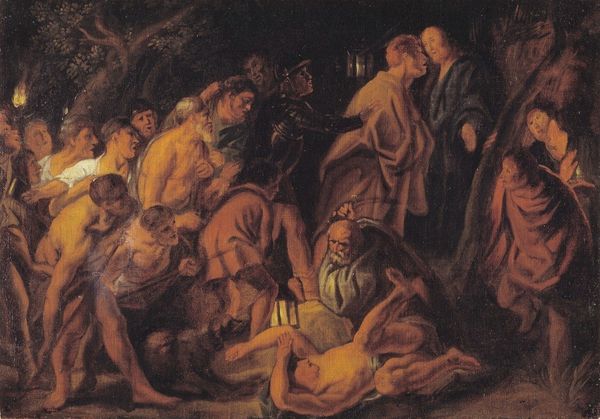
painting, oil-paint
#
narrative-art
#
painting
#
oil-paint
#
mannerism
#
figuration
#
oil painting
#
genre-painting
Dimensions: 18.5 x 21.5 cm
Copyright: Public domain
Editor: Here we have Pieter Bruegel the Elder's painting, "The Beggars", created in 1568 using oil paints. It strikes me as quite a grim portrayal; the figures seem dehumanized and almost grotesque. How do you interpret this work, especially considering the historical context? Curator: Bruegel certainly offers a striking image here. Note how each beggar's clothing is adorned with fox tails. What could that signify to you? Editor: It's unusual, almost like a badge or marker... Maybe it signifies something about their social status? Curator: Precisely. Fox tails were often associated with foolishness or deception in the 16th century. These symbols weren't just decorative; they served as cultural identifiers. Notice how they crawl with wooden crutches: it looks like their legs don't function well. Can you infer what the painter's aim was by using such imagery? Editor: I imagine Bruegel is commenting on societal attitudes toward disability, or maybe critiquing the way these individuals were marginalized and labeled within their community. Are they truly foolish, or are they simply made to look foolish? Curator: An insightful point. And the man standing behind them, wearing black... Notice he is an almoner. It shows that they are being sustained by charity. Through careful depiction, Bruegel embeds moral and social commentary in these figures. They carry not just physical burdens but symbolic ones, too. What do you take away from understanding these cultural symbols? Editor: It completely reframes the piece for me. I initially saw only a scene of suffering, but now I recognize the powerful social commentary Bruegel weaves in, using symbolism to communicate beyond just the visual. Curator: Indeed. It reveals the lasting power of visual symbols and how they shape our understanding of history and culture.
Comments
No comments
Be the first to comment and join the conversation on the ultimate creative platform.
